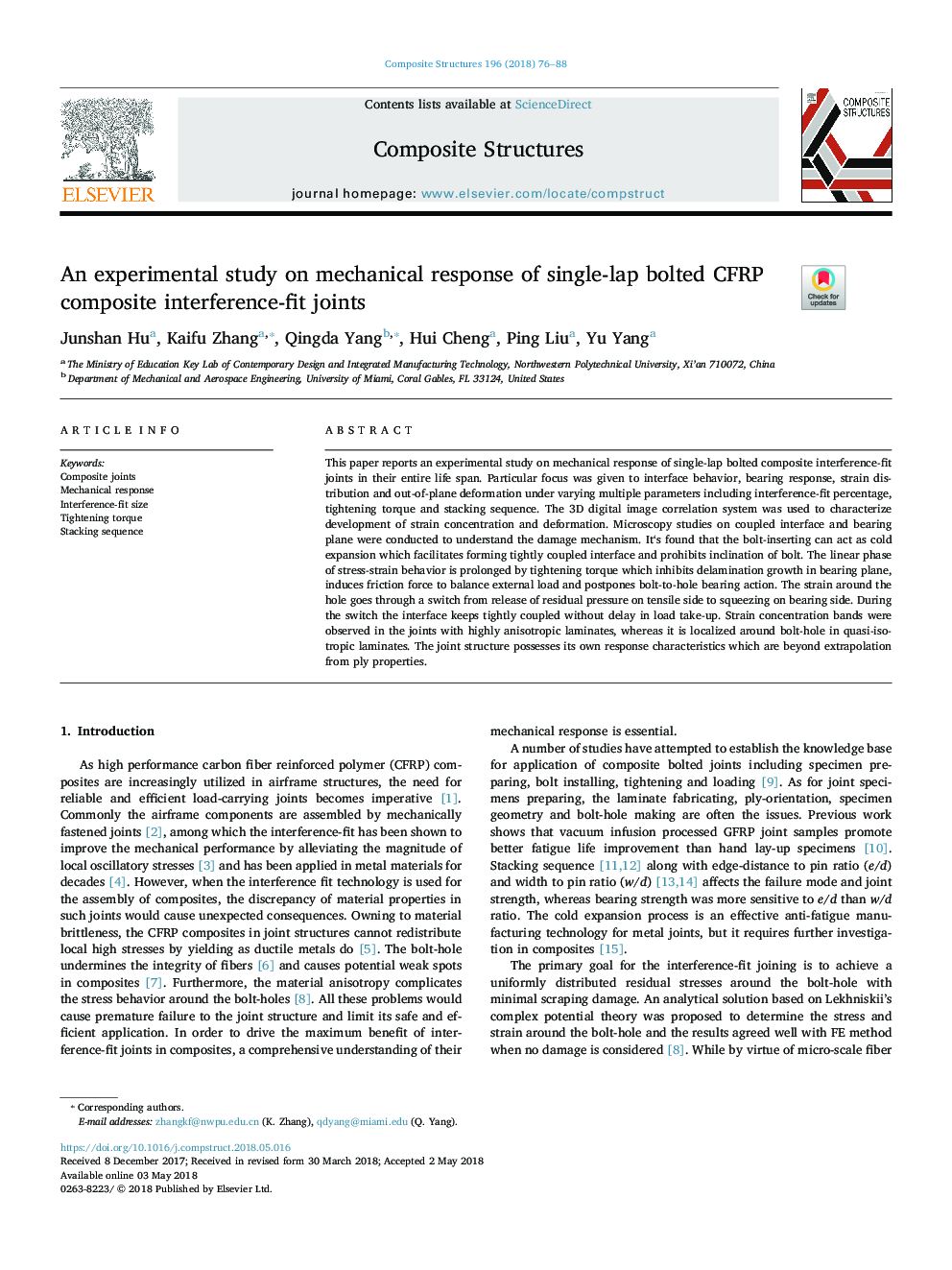| Article ID | Journal | Published Year | Pages | File Type |
|---|---|---|---|---|
| 6703332 | Composite Structures | 2018 | 13 Pages |
Abstract
This paper reports an experimental study on mechanical response of single-lap bolted composite interference-fit joints in their entire life span. Particular focus was given to interface behavior, bearing response, strain distribution and out-of-plane deformation under varying multiple parameters including interference-fit percentage, tightening torque and stacking sequence. The 3D digital image correlation system was used to characterize development of strain concentration and deformation. Microscopy studies on coupled interface and bearing plane were conducted to understand the damage mechanism. It's found that the bolt-inserting can act as cold expansion which facilitates forming tightly coupled interface and prohibits inclination of bolt. The linear phase of stress-strain behavior is prolonged by tightening torque which inhibits delamination growth in bearing plane, induces friction force to balance external load and postpones bolt-to-hole bearing action. The strain around the hole goes through a switch from release of residual pressure on tensile side to squeezing on bearing side. During the switch the interface keeps tightly coupled without delay in load take-up. Strain concentration bands were observed in the joints with highly anisotropic laminates, whereas it is localized around bolt-hole in quasi-isotropic laminates. The joint structure possesses its own response characteristics which are beyond extrapolation from ply properties.
Related Topics
Physical Sciences and Engineering
Engineering
Civil and Structural Engineering
Authors
Junshan Hu, Kaifu Zhang, Qingda Yang, Hui Cheng, Ping Liu, Yu Yang,
